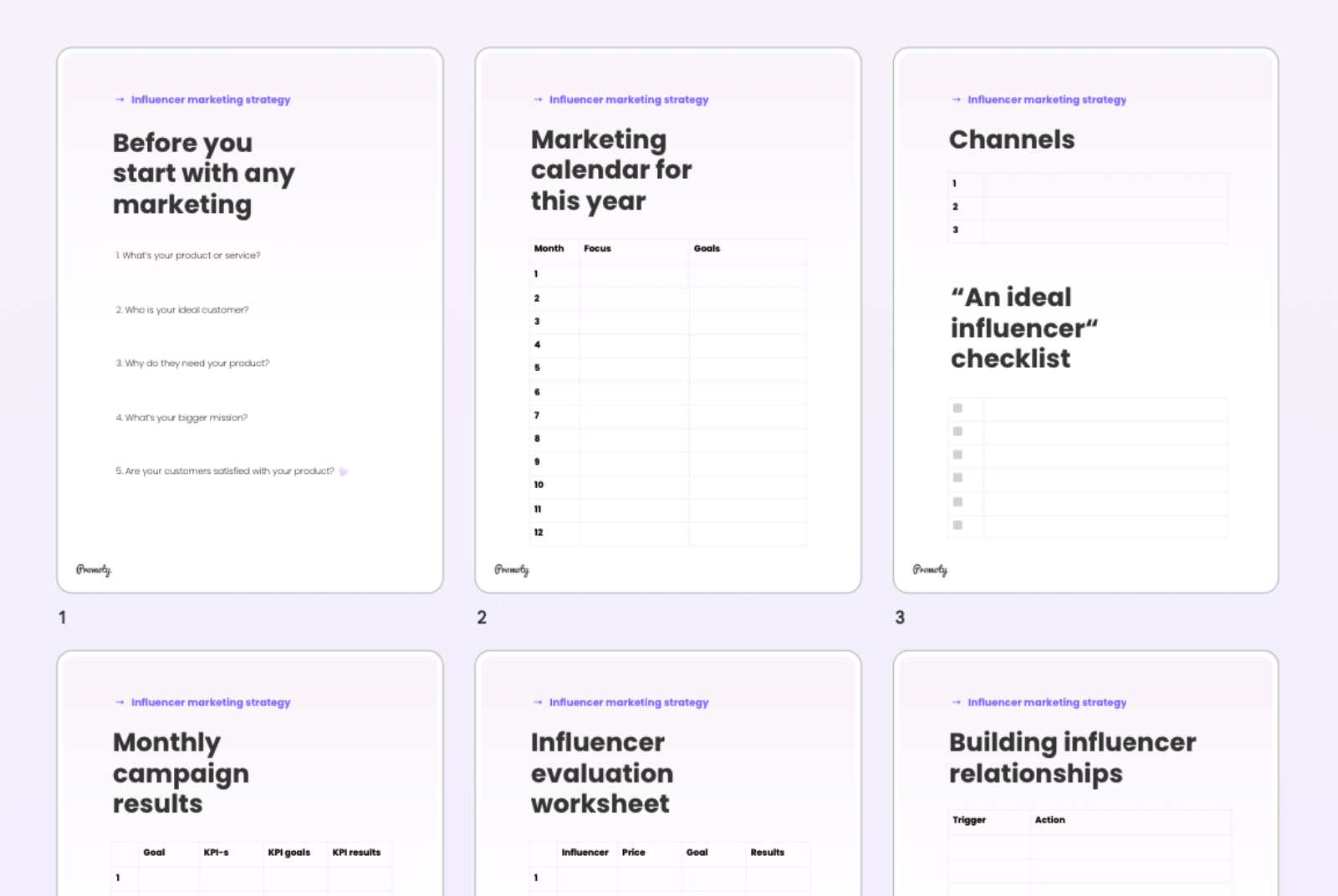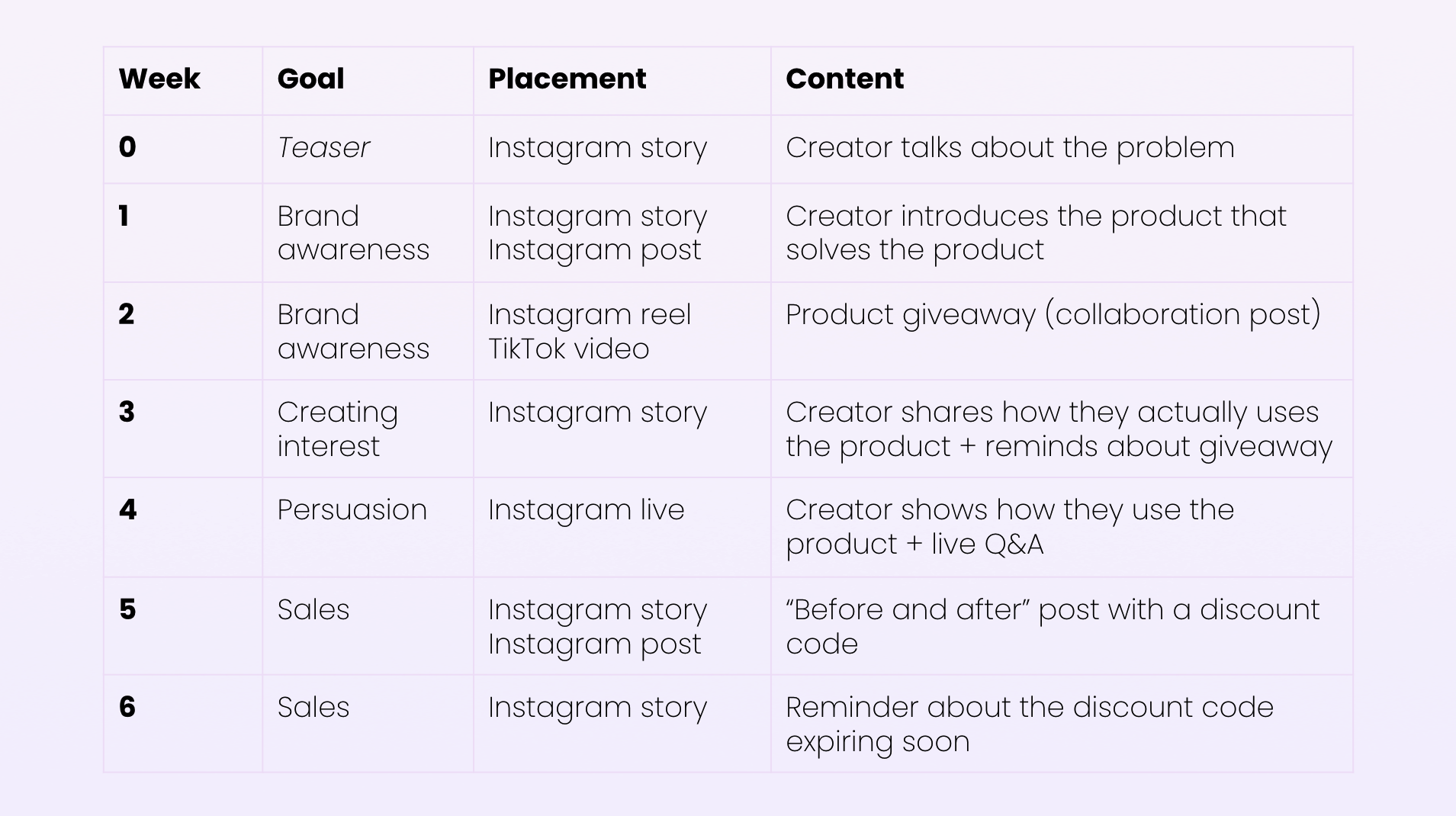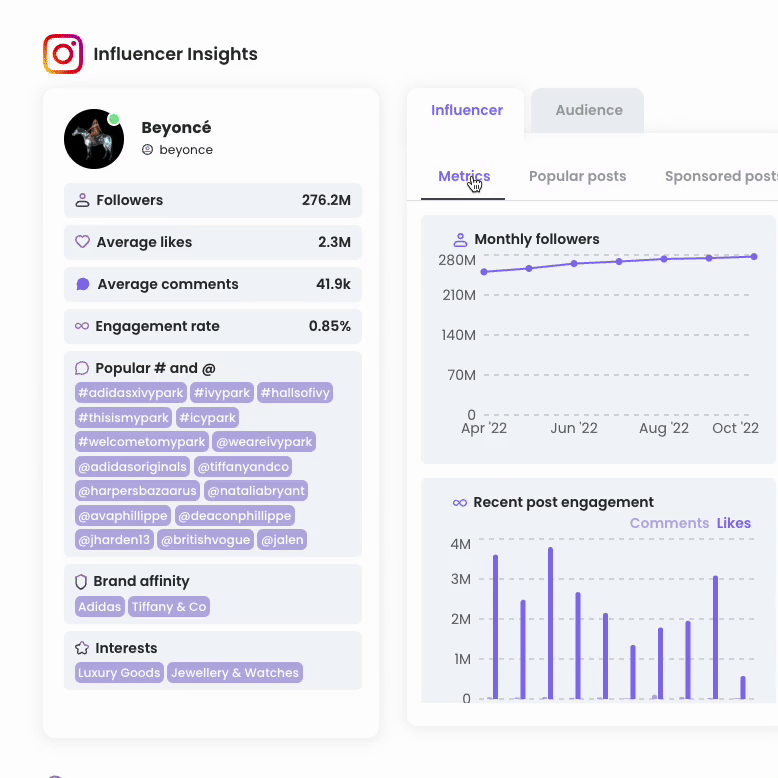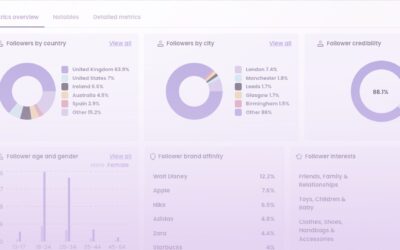To make influencer marketing work well, you need a strategic approach. Before you dive into calculating reach and enjoying eye-catching photos, you need to know your goals, target group, and channels.
That’s why we made a worksheet for influencer marketing strategy. It helps set a clear message, figure out the campaign’s purpose and who it’s for, choose where to promote it, and make a checklist for the perfect influencer. We use this same plan for our customers’ influencer marketing strategies – and at the end of the blog article, you can download it for free! 🤍
But first, here are 7 steps to take for your annual influencer marketing planning ↓

1. Start with a “retro”
Just like we look back on our year to see what happened in our personal lives, you can do a “retro” for your influencer marketing.
Take a moment to think about what worked well and what you learned. Identify the standout campaigns and collaborations that brought the most success. Consider which influencers were a hit and resonated with your audience. This reflection helps you to summarize your learnings and make better choices for the next round of influencer marketing.
2. Create your “ideal influencer” checklist
Picking the right influencers is the key to successful influencer marketing. Thus, you should start by creating (or updating) a checklist for the perfect influencer. That might include:
◻️ Audience that fits your target group
◻️ Values that align with your brand
◻️ No fake followers or fake engagement
◻️ Haven’t worked with your competitors before
This checklist will serve as a guide in selecting influencers who authentically resonate with your brand.
3. Review the focus channels
The next step is reviewing the marketing channels that you are focusing on.
Which channels are bringing the most return on investment? Which channels have more potential? Are there any new social media channels that should be added to your marketing mix?
Obviously, you want to focus on the channels that bring the most return on investment – and cut the ones that don’t. So, it’s a good idea to look at what’s working, explore new options, and make sure you’re getting the most out of your influencer marketing efforts.
4. Define your goals, KPI-s, and budgets
Influencer marketing should support your marketing and business goals. Thus, your influencer marketing objectives should align with your overall marketing objectives.
Many people like to use the S.M.A.R.T. framework for setting goals. That makes your goals realistic and specific, such as selling 10,000 new products during the initial launch – or increasing the revenue of the summer campaign by 30% compared to the last year.
Of course, utilizing data from the previous year makes this annual planning more informed and reliable. If you expect 30% growth this year, you also need to raise the input (such as: the number of blog articles or influencer collaborations) and dedicated marketing budget by 30%.
As the ad prices are constantly rising, we recommend adding a 10-20% buffer to your budget. This way, you can raise the chance that you will meet and exceed your projections.
5. Pinpoint the biggest campaigns
Next, it’s time to identify your high seasons – and plan your biggest campaigns before these seasons.
For example, if you’re an ice cream brand with a high season in the summer, you should run your main campaign in May (or even April). This way, you’ll have enough time to build brand awareness and create buzz around your product before everyone switches off their phones and heads to the beach.
According to surveys, it takes 7-8 touchpoints with a customer to make a purchase decision. Thus, you need to be seen enough times before the high season starts. Here’s an example of an influencer marketing campaign with a strategic approach:

Keep in mind that organizing a campaign takes time. If you’re launching a product in May, you might want to start with a teaser campaign in April. That means you should start searching for influencers in February – so that you can confirm them with your team, reach out to them, and negotiate the deals in March.
P. S. Karola Karlson has an amazing article about seasonal marketing planning.
6. Start building long-term influencer partnerships
It’s no secret that long-term partnerships foster authenticity, trust, and a deeper connection between the influencer and your brand, leading to better results in influencer marketing.
Focus on relationship building. Strong relationships with influencers can lead to organic advocacy for your brand, both online and offline.
How to build influencer relationships? In the same way that you build any relationships: care about them.
♡ Remember their birthdays
♡ Engage with their content
♡ Use their content in your marketing materials
♡ Ask for their input and feedback
♡ Send them little gifts and surprise packages
♡ Keep them informed about your brand
7. Optimize your strategy throughout the year
An annual influencer marketing plan should not be static. Instead, you should measure the results quarterly (or even monthly) and adjust accordingly.
Typically, around 20% of influencers bring 80% of the results. So, if you add 10 new influencers now and then, it’s likely that 2 of them will bring amazing results. Turn these 2 intro brand ambassadors, and at the same time, bring in another 10 new influencers to see if you can find more ambassadors.
This way, you’ll build an army of influencers who all bring results for your brand. 🥷🏼
Wait – but what about the worksheet?
To make your influencer marketing effective, you’ve got to start with a plan.
For this, we have created an influencer marketing strategy worksheet, which includes setting a clear message, defining the purpose and target group of the campaign, selecting channels, checklists for your “ideal influencer” and building relationships. Download it here ↓



